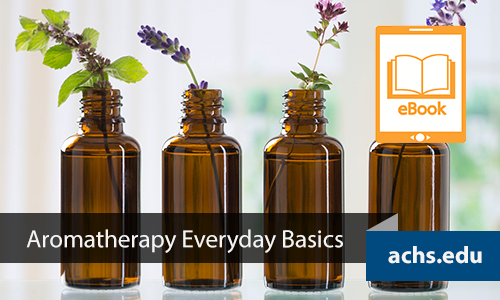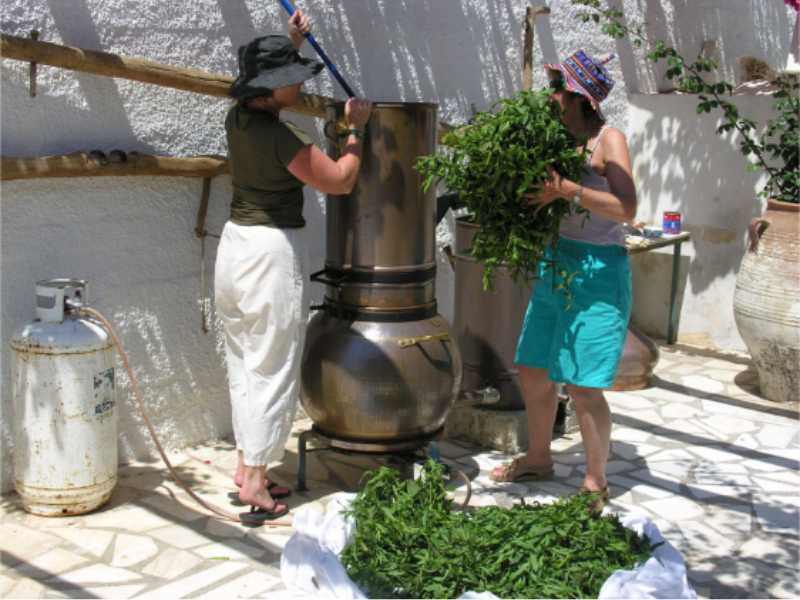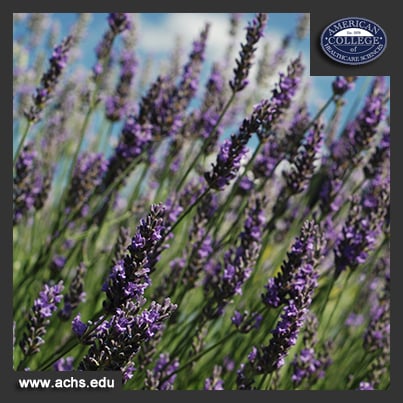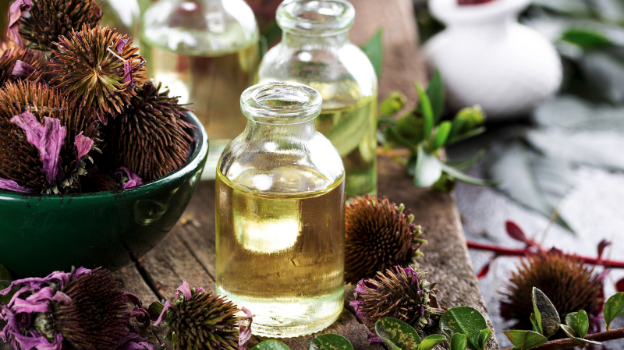Not all essential oils are created equal. While we might like to assume that all oils— beautifully and professionally packaged and sold in seemingly reputable stores—are of the same quality, we’d be doing ourselves (and potential clients!) a disservice.
In reality, many factors affect the quality of an essential oil. And quality, in turn, affects therapeutic value (or, in simpler terms, the outcome of your desired result).
Spend some time learning about the different factors that can affect the quality of your essential oils so that you know what to look for when you’re reading a label or talking to a potential new supplier.
An Essential List of Factors that Can Affect Essential Oil Quality
Like us, plants have preferences. Clary sage Salvia sclarea (L.), for example, is best harvested during the late flowering period, and it’s best distilled fresh, while rosemary Rosmarinus officinalis (L.) yields a greater volume of
The quality of a packaged essential oil may be compromised if the following factors are not considered for the specific plant being harvested and processed into an essential oil:
- Where was the plant grown? Lavender Lavandula angustifolia (Mill.) is a great example. The higher the altitude (ideally above 1,200 meters), the greater concentration of the linalyl acetate (another ester that packs a powerful anti-inflammatory punch).
- What part of the plant was used/should have been used to distil the oil? The active constituents are usually concentrated in one part of the plant. If you are looking for specific results, don’t use the leaf oil when the therapeutic constituents are concentrated in the bud. Clove Syzygium aromaticum (L.) is a great example.
- How was the plant grown? Organically? Pesticide-free? As environmentally aware aromatherapists, certified organic is always preferred for people and the planet.
- What is the climate of where the plant was grown? Plants thrive where they like to grow … just like us. If they are grown outside their comfort zone, the plant does not develop the full array of the chemical constituents at the level that is most effective.
- How was the plant harvested? Ethically? Sustainably? Ethical, sustainable harvesting adds to the power of the essential oil. After all, would you want to buy and use an essential oil that requires 50-year-old trees to be felled (like Indian sandalwood Santalum album (L.)) or that was gathered by women at 4 a.m. who are paid the equivalent of $5 U.S. a month (like jasmine Jasminum
grandiflorum (L.)). - When was the plant harvested? You would not harvest your carrots while they are still as thin as pencils; the same with essential oil plants. They are “ripe” when they have produced the most efficacious levels of the beneficial constituents.
- How was the essential oil produced? Some plants like jasmine J.
grandiflorum will not yield their aromatic molecules to steam so are best not distilled. Jasmine J.grandiflorum should be a solvent extraction (also known as an absolute). - How was the essential oil stored following its production? Essential oils are volatile and just like wine, they can become “corked.” Oxygen will alter their chemical profile over time, as will heat and light. Protection is the key, including limiting their exposure to oxygen and high temperature. You know you are a convert when you open your refrigerator and the shelves are full of citrus oils and very little else. We can’t live on great aromas alone, but a whiff of certified organic, steam-distilled neroli Citrus aurantium (L.) var.
amara each morning as you head for your freshly squeezed orange juice can transport you to the flowering orange groves in the Sicilian countryside (maybe en route to a fourth-generation, family owned neroli distillery!).
7 Tips to Check if You’re Getting High-Quality Essential Oils
So, what can you do to ensure the essential oils you buy are what they say they are and safe to use? Well, …
#1 Get to know your supplier.
Do your research. These days, almost all retail-related websites include a place for people to leave reviews. Spend a little time reading through these, and you’ll get a sense for the overall vibe of the retailer. Then, when you’ve located someone you trust, work on developing a relationship.
You can start with a simple “get to know you” email or a quick phone call; ask your one or two “deal-breaker” questions about quality and see what kind of response you get.
Ideally, you want to purchase from a supplier deals directly with reputable distillers (and can, therefore, easily answer your questions). Also, suppliers usually will provide a small sample of the oil for you to check before purchasing larger quantities.
#2 Latin names are where it's at.
Order
#3 Perform your own tests.
You can use organoleptic testing to help ensure your essential oils have not been extended or diluted, start with this ACHS blog post: https://info.achs.edu/blog/bid/327398/Quality-of-Essential-Oils-Diluents-Extenders-Synergy-Oh-My).
Organoleptic testing uses all of your senses to evaluate an essential oil. You want to educate your olfactory senses to the smell, taste, feel, and look of different essential oil samples to help build your experience.
To carry out an organoleptic test, check out the smell, feel, taste, and look (i.e., color) of the oil. Educate your olfactory senses at every opportunity: smell, taste (only the safest oils),
#4 The price tag does not equal quality.
Just because an essential oil is pricey does not mean it’s of higher quality. You should be assessing your oils (organoleptic testing, requesting GC/MS reports, asking about sourcing) regardless of the price tag. However, if a price is unusually low, this could be an indication that an oil is not what the label claims. This could mean it is diluted in a base oil or is somehow adulterated.
Big-ticket oils such as rose Rosa damascena (Mill.), neroli C.
#5 Build your experience.
So, how can you start to assess the quality of essential oils for yourself? Start by sampling as many pure oils vs. synthetic oils as possible. Write down the differences. Keep an “aroma” journal, and over time, you’ll start to notice the subtle (and sometimes, not so subtle) differences between pure, unadulterated oils and synthetic or adulterated fragrances.
If you are really serious about essential oil quality, develop relationships in the aromatherapy community and join the conversation. You might even seek out a mentor in the community to help guide you on your journey to developing a keen sense for quality oils.
#6 Know what’s lurking in your essential oil.
As we discussed, you want to make sure your bottle of essential oil contains only essential oil. Sometimes sellers will add cheaper substances to the essential oil to get more “bang for their buck.”
There are a few kinds of adulterants. “Diluents” are substances (typically odorless) that are added to essential oils to dilute the product, saving the seller money on the real essential oil.
“Extenders” are often synthetic chemicals created in a lab to mimic the aromatic qualities of essential oils.
Other unsavory substances are often labeled as “nature identical,” but there’s nothing natural about them. This typically refers to a chemically synthesized version of a plant. Yet, plant substances have unique chemical properties and makeup that work together “synergistically” in the body and cannot be reproduced in a laboratory.
ACHS President Dorene Petersen discusses diluents, extenders, and synergy at length in this blog post: http://info.achs.edu/blog/bid/327398/Quality-of-Essential-Oils-Diluents-Extenders-Synergy-Oh-My
Adulterated oils are never suitable for clinical aromatherapy, and can be harmful to our bodies.
You can also ask your supplier to provide you with a GC/MS test, which can (sometimes, not always) detect adulterants. ACHS President Dorene Petersen discusses this type of testing in a blog post here: http://info.achs.edu/blog/bid/316901/top-5-ways-to-check-quality-of-essential-oils-gas-chromatography-gc-mass-spectometry-ms-latin-organoleptic-testing-knowing-your-supplier
#8 REMEMBER: Essential oil quality directly relates to safety.
If you’re wondering, “Quality is great, but what does it have to do with essential oil safety?”
The answer
Adulterants can harm the body. For example, the diluent diethyl phthalate (DEP), often added to commercial fragrance products, may have cancer-causing properties.[1]
Extenders are even more difficult to detect since they are synthetically designed to mimic essential oils. The scary part is that they can produce negative effects that the natural essential oil would not produce, and can actually harm the body.
Lastly, not all adulterated oils are purposefully adulterated. Often, non-organic raw materials that are sprayed with harmful chemical pesticides bring these toxins with them into the essential oil. That is why choosing certified organic essential oil is paramount when looking for quality oils.
Pesticides can be extremely harmful to our bodies and have been linked to adverse effects on the nervous system, skin, eyes, and endocrine system.[2] Not to mention, they do incredible damage to our environment. Additionally, certified organic oils are produced without the use of genetic engineering and artificial fertilizers—another big plus in the quality category.
Keep Up with the Safety Series!
Now that you have the low down on essential oil quality, keep up with our series on safety by subscribing to the ACHS Health and Wellness Blog. Did you miss our first article on essential oil safety? Check it out here: http://info.achs.edu/blog/aromatherapy-safety-basics
Disclosure of Material Connection: This blog may contain affiliate links. I am disclosing this in accordance with the Federal Trade Commission’s 16 CFR, Part 255: “Guides Concerning the Use of Endorsements and Testimonials in Advertising.
This article is for informational purposes only. It is not intended to treat, diagnose, cure, or prevent disease. This article has not been reviewed by the FDA. Always consult with your primary care physician or naturopathic doctor before making any significant changes to your health and wellness routine.
[1] López-Carrillo, L., Hernández-Ramírez, R.U., Calafat, A.M., Torres-Sánchez, L., Galván-Portillo, M., Needham, L.L., et al. (2010). Exposure to phthalates and breast cancer risk in northern Mexico. Environ Health Perspect,118, 539-44.
[2] Environmental Protection Agency. (2016). Pesticides' Impact on Indoor Air Quality. Retrieved from https://www.epa.gov/indoor-air-quality-iaq/pesticides-impact-indoor-air-quality#Health_Effects






